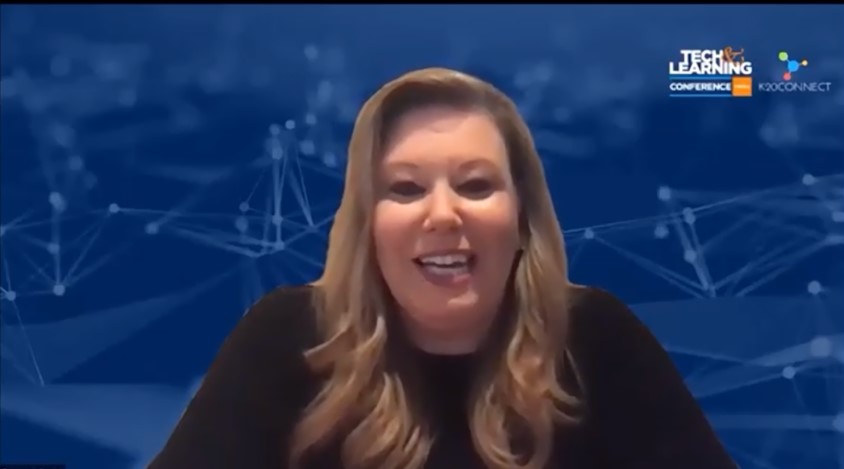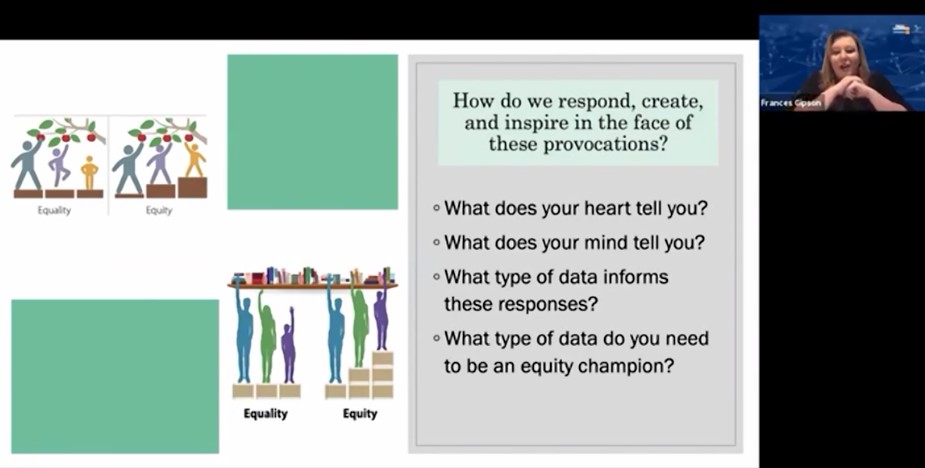Digital Storytelling in Enterprise Reporting and Actionable Equity
Digital storytelling will define the next decade of data

“I am on Team Kid, meaning I strive for love-soaked leadership,” says Frances Marie Gipson, Clinical Associate Professor and Director, Urban Leadership Program at Claremont Graduate University. “This means putting students at the center and then backward planning for what our students need. They are learners now and can become leaders in a community that supports them.”
So the challenge is how to move forward in a way in that research and practice comes together and also takes into consideration how to collect crucial data and build a story around it.
“We went into the COVID-19 pandemic, then immediately into crisis—it was emergency pedagogy for all,” says Gipson. “Many still feel like we're in that space—deciphering who has connection, who doesn't, who has device access, and then how do we have relationships with students, how do we determine attendance, grading. Then it becomes how do we move from remote to restart, let alone recovery.”
Gipson discussed digital storytelling in depth during Tech & Learning’s recent “Future-Proofing Your District” virtual conference.
The Story of Three Little Provocations

Gipson poses three provocations to consider:
1. Is Normal What We Want
“It's a challenge, this new normal,” says Gipson. “But what is normal? Is ‘normal’ what we even want? In the words of Laura Darling Hammond, what we had was 'deeply erratic and unequal in delivery.' Some places were doing a phenomenal job, really closing gaps about big issues of equity to become mirrors and models of what we could do as a nation for our students. In other cases, we have to ask what is normal, really normal, and do we want to use that language.”
Tools and ideas to transform education. Sign up below.
As of March, studies have shown students in high poverty communities were not finding access points, even with a device. WiFi-enabled buses or working closely with public libraries to create study hubs are solutions, as are sponsorship opportunities for major partners to create connected spaces.
2. Rethink What Competency Means
Another provocation to consider is this quote by John Kind: “There's a danger to the sequential model, but there is also a danger to behaving as though those gaps that students have don't matter and that you can get them to succeed with grade-level work without ever addressing those gaps.”
This could mean redesigning around mastery learning and thinking about competency in different ways, says Gipson. “For example, Khan Academy has really illustrated, ‘This is what competency means’ and backward planned for that so that topics and strategies are addressed. We can curate high-quality curriculum based on things we know work and then put our energy on the relationship building and intervening supports that might be needed.”
3. Online is Not Optional
A recent Forbes article stated, “Online teaching will no longer simply be an option.” This looks different in different environments, and is shaped by connectivity, whether students have devices, and where those devices are being used--are students sitting in the parking lot of a fast food restaurant, what do we know about their learning settings?
“When it comes to the brick-and-mortar schoolhouse, there might be a mourning over that, a loss, but for others there's an opportunity,” says Gipson. “Now we must build capacity, find the balance and advocacy points, as we move out of this emergency and into the restart.”
Data Storytellers will Define the Next Decade of Data
“When you communicate what's happening for you and your district, think of each data point as a character in your story,” says Gipson. “It's a way to share your values and visualize these insights in a more structured and narrative way. The data feels cold, this is a storytelling leadership opportunity. What's the story of your system? Facts and figures won't influence decisions or move people to act. Well-crafted data stories can and will.”
Tools, Belt to Box to Chest
While using terms such as remote and distant and online, we need to think in a more relational, connected storytelling environment. It’s a new way of process modern learning.
“Think about your teaching toolbox—you know how to selectively pull things out,” says Gipson. “But there's also this big red tool chest with all of these parts and intervening resources. You might think you’ll never know how to use all of that, but it is there. I'd advocate a tool belt—what can we quickly and nimbly use in the moment and do you know how to differentiate quickly (and then know when to go to the toolbox and if needed, or the tool chest).”
Dashboards and data are great, but teachers and the community need to easily access the information, and to be able to add the storytelling that adds the texture.
“By using dashboards or automated alerts, employees across your organization can be provided with relevant, role specific insights,” says Gipson. “When these individuals are empowered to act on these insights, schools will see a beneficial wave of incremental improvements.”
Sascha has nearly two decades of experience as a freelance journalist writing for national magazines, including The Washington Post, LA Times, Christian Science Monitor, National Geographic Traveler, and others. She writes about education, travel and culinary topics.

